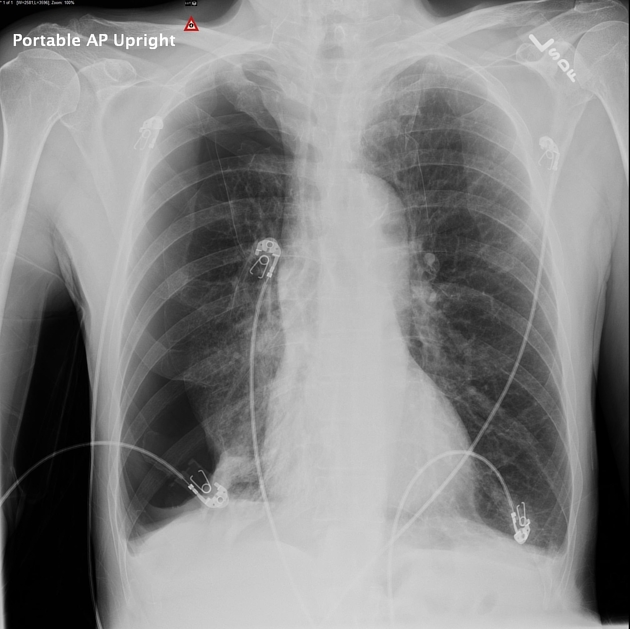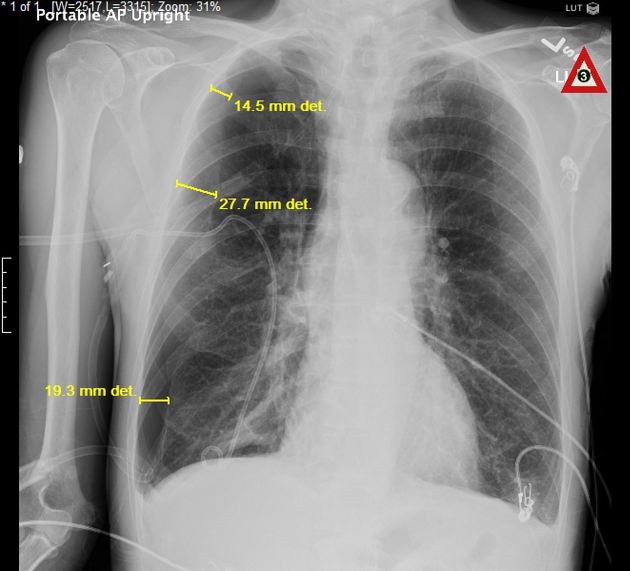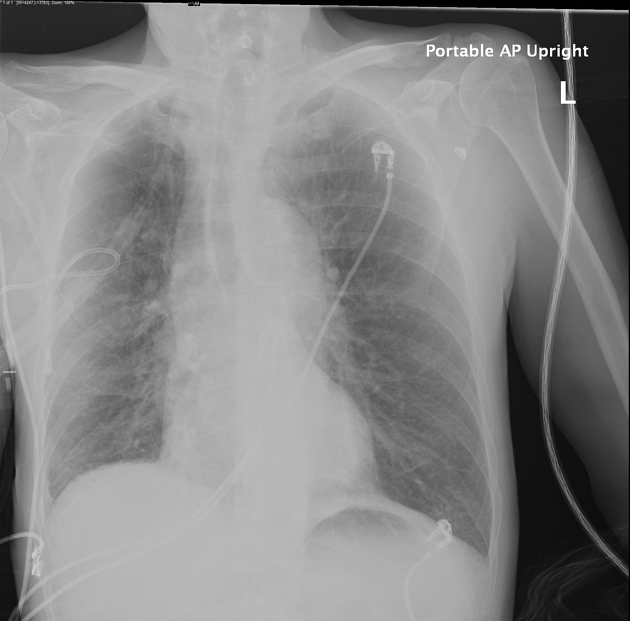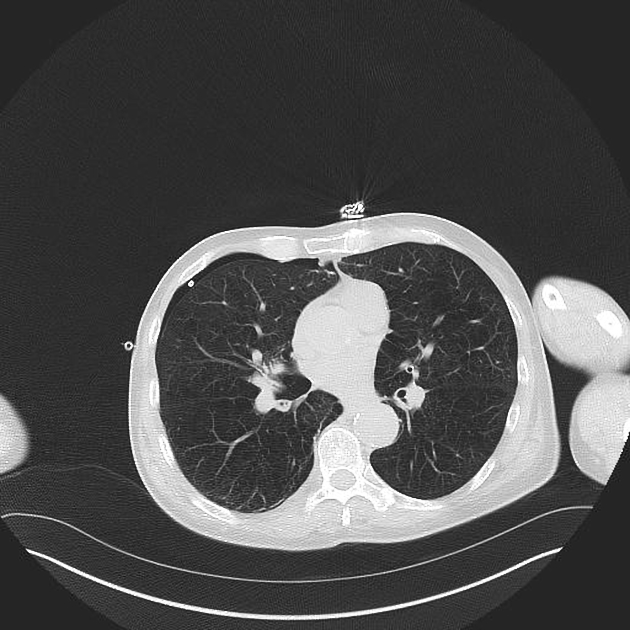Q: A 35 year-old male presents to the Emergency Department with sudden worsening shortness of breath and pleuritic chest pain after getting hit in the left side of the chest during a fight. Physical exam reveals moderate respiratory distress with absent breath sounds and hyper-resonance to percussion on the right, with tracheal deviation to the left. Which of the following is the most appropriate next step?
A. Order a V/Q scan
B. Order a CXR
C. Administer a sclerosing agent
D. Insert a large bore needle into the right second ICS stat
show answer
A: Answer is D:
Needle thoracostomy into the involved side will decompress the tension pneumothorax until a chest tube can be inserted.
Q: Which of the following mechanisms leads to a primary pneumothorax?
A. Penetrating or blunt trauma forces
B. Underlying lung cancer
C. Rupture of subpleural apical blebs due to high negative intrapleural pressures
D. Pressure of air in the pleural space exceeds room air pressure
show answer
A: Answer is C: A primary spontaneous pneumothorax is thought to result from a rupture of subpleural apical blebs secondary to high negative intrapleural pressures. Penetrating or blunt trauma force is responsible for a traumatic pneumothorax. A pneumothorax that results from an underlying lung disease is classified as a secondary pneumothorax. When pressure of air in the pleural space exceeds room air pressure, it leads to a tension pneumothorax.
Q: A 31 year-old male presents to the ED with sudden onset SOB associated with sharp pleuritic right-sided chest pain. Auscultation of the chest reveals absent breath sounds over the right apex with normal heart sounds. Percussion of the right apex is noted to be hyper-resonant. Which of the following is the most likely diagnosis?
A. Hemothorax
B. Pneumothorax
C. Pulmonary embolus
D. Foreign body aspiration
show answer
A: Answer is B: This patient most likely has a spontaneous pneumothorax which is supported by the presenting symptoms of sudden onset of dyspnea and pleuritic chest pain as well as the physical exam findings of absent breath sounds and hyper-resonance to percussion.








 Unable to process the form. Check for errors and try again.
Unable to process the form. Check for errors and try again.